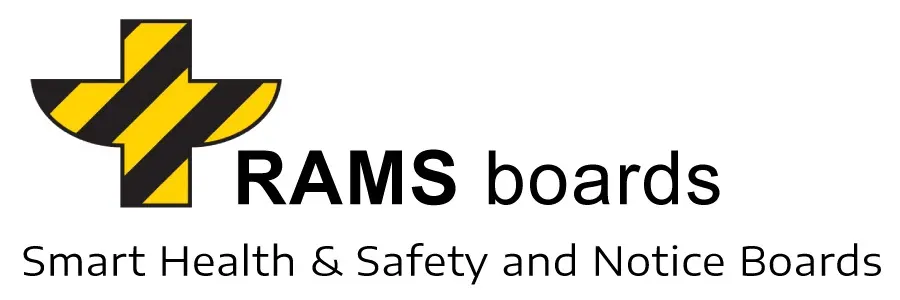RAMS boards in Mountain and Hill Stations and Ski Resorts: Enhancing Safety and Operations in High-Altitude Environments
Mountain and hill stations, known for their high-altitude and hard-to-access locations, present unique challenges in terms of safety and operational management. These environments demand robust systems that can withstand extreme conditions while providing clear and reliable communication. RAMS (Risk Assessment and Method Statement) Boards have emerged as a crucial tool in these settings, addressing the specific needs of high-altitude operational sites.
The Unique Challenges of Mountain or Hill Stations and Ski Resorts
The operation of mountain and hill stations is fraught with challenges unique to their high-altitude and often isolated locations:
| Challenge | Description |
|---|---|
| Harsh Weather Conditions | Frequent extreme weather, such as high winds, heavy snowfall, and rapid temperature changes. |
| Accessibility Issues | Difficulties in accessing these stations, especially during adverse weather conditions or emergencies. |
| High Altitude Risks | Health risks associated with high altitudes, including altitude sickness, hypothermia, and reduced oxygen levels. |
| Communication Barriers | Limited access to regular communication channels, crucial for safety and operational coordination. |
| Environmental Impact | Need to minimize the ecological footprint in often pristine natural environments. |
The Role of RAMS boards in Addressing These Challenges
RAMS boards serve as a vital asset in managing the inherent risks and operational complexities of mountain and hill stations:
- Enhanced Safety Communication: They provide clear and visible safety instructions and emergency procedures, essential in these high-risk environments.
- Operational Efficiency: RAMS boards centralize crucial information, reducing the time personnel spend searching for updates, which is particularly beneficial in environments where conditions can change rapidly.
- Adaptability to Extreme Conditions: The boards can be updated to reflect the dynamic weather conditions and operational changes typical of mountainous areas.
- Emergency Preparedness: In remote and hard-to-access areas, having accessible emergency contact information and procedures is critical. RAMS boards play a vital role in ensuring this preparedness.
- Environmental Awareness: They can also be used to promote and remind staff and visitors of environmental protection protocols and sustainability practices.
Case Studies: RAMS boards at Mountain and Hill Stations
- High-Altitude Research Facility: At a research station situated in a remote mountainous region, RAMS boards would be crucial for displaying safety protocols for working in extreme cold and high-altitude conditions, including emergency response procedures in case of altitude sickness.
- Ski Resort: In a popular ski resort, the boards will provide essential information on avalanche safety, ski lift operation procedures, and emergency contacts, significantly enhancing the safety of both staff and visitors.
- Mountain Observatory: At an observatory located at a high elevation, RAMS boards are to be used to communicate nightly observation schedules, weather forecasts, and specific safety measures for working with sensitive equipment in low-oxygen conditions.
The Benefits of RAMS boards in Mountain or Hill Stations and Ski Resorts
| Benefit | Description | Expanded Details |
|---|---|---|
| Safety Enhancement | Ensures continuous visibility of safety procedures and emergency contacts. | Crucial in high-altitude environments where extreme conditions and isolation amplify risks. Helps in quick response and adherence to safety protocols during emergencies. |
| Information Centralization | Provides a single point of reference for all operational and safety-related information. | Essential in remote and challenging environments for efficient management of operations and for ensuring that all staff have access to the same updated information. |
| Adaptability | Can be quickly updated to reflect changes in weather conditions, operational procedures, or environmental regulations. | Allows for real-time communication of vital information, adapting to the dynamic and often unpredictable nature of mountainous areas. |
| Durability | Built to withstand harsh outdoor conditions, ensuring longevity and reliability. | Ensures that RAMS boards remain functional and visible in extreme weather, contributing to their reliability as a constant source of information. |
| Compliance and Training | Facilitates ongoing training and reinforces compliance with safety standards and environmental policies. | Aids in maintaining high safety standards and regulatory compliance, essential for the well-being of staff and preservation of the natural environment. |
| Environmental Awareness | Promotes sustainability practices, reminding staff and visitors of the importance of preserving the natural environment. | Encourages environmentally responsible behavior, crucial in ecologically sensitive high-altitude regions. |
| Enhanced Communication | Provides a reliable platform for effective communication in areas with limited access to digital communication channels. | Improves coordination and information dissemination among staff, crucial for operational efficiency and emergency response. |
| Risk Management | Helps in the identification, documentation, and communication of potential risks and hazards. | Essential for proactive risk management and mitigation, enhancing overall safety in unpredictable mountainous environments. |
Summary
In the challenging and dynamic environments of mountain and hill stations, RAMS boards have become an indispensable tool, enhancing safety, communication, and operational efficiency. Their adaptability to harsh weather conditions, ability to centralize crucial information, and contribution to environmental awareness make them a valuable asset in these high-altitude operational sites.
The integration of RAMS boards into the operations of mountain and hill stations underscores a commitment to maintaining high safety standards, ensuring operational efficiency, and promoting environmental stewardship. As activities in these regions continue to grow, the role of RAMS boards in ensuring the safety and sustainability of operations will remain vital, contributing significantly to the success and safety of high-altitude endeavours.
